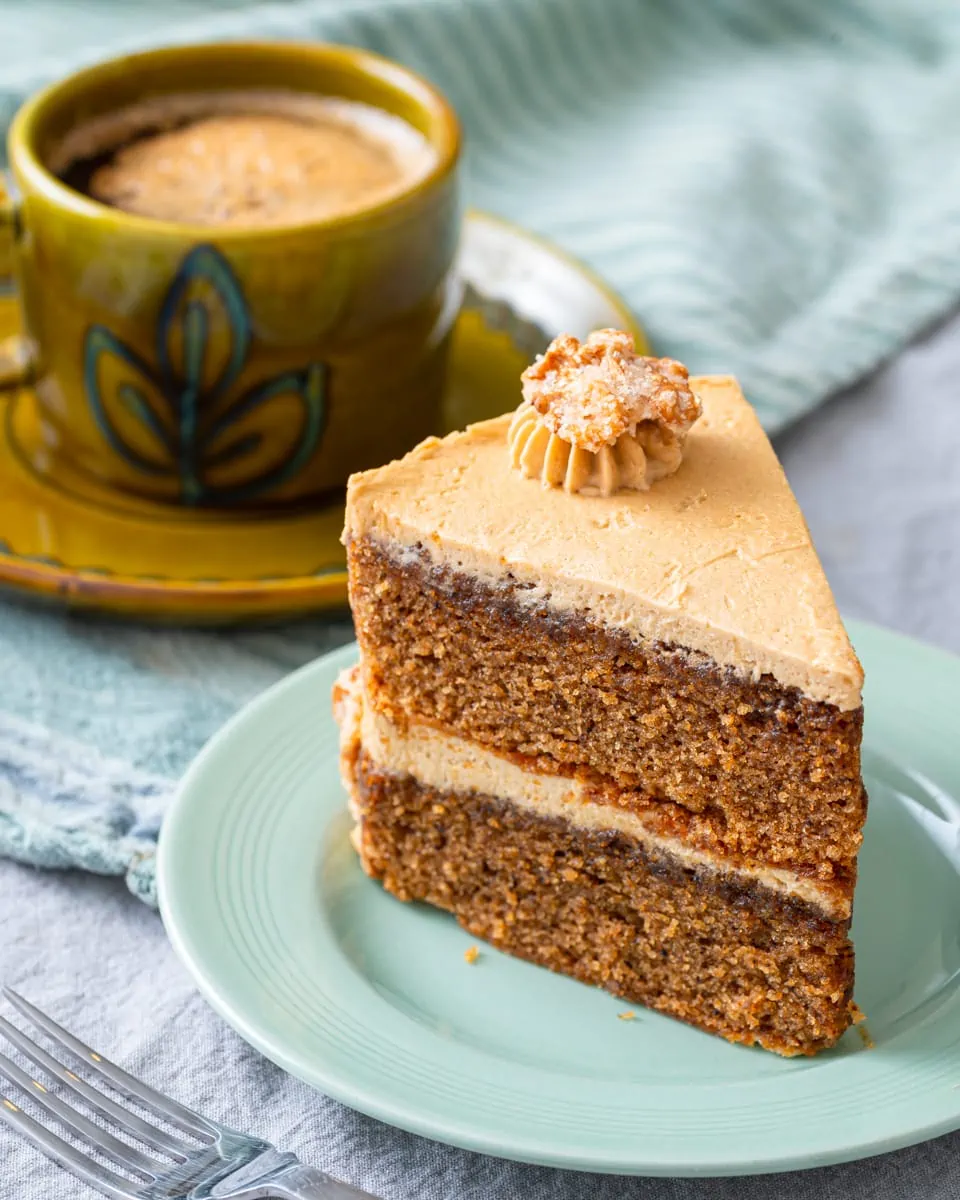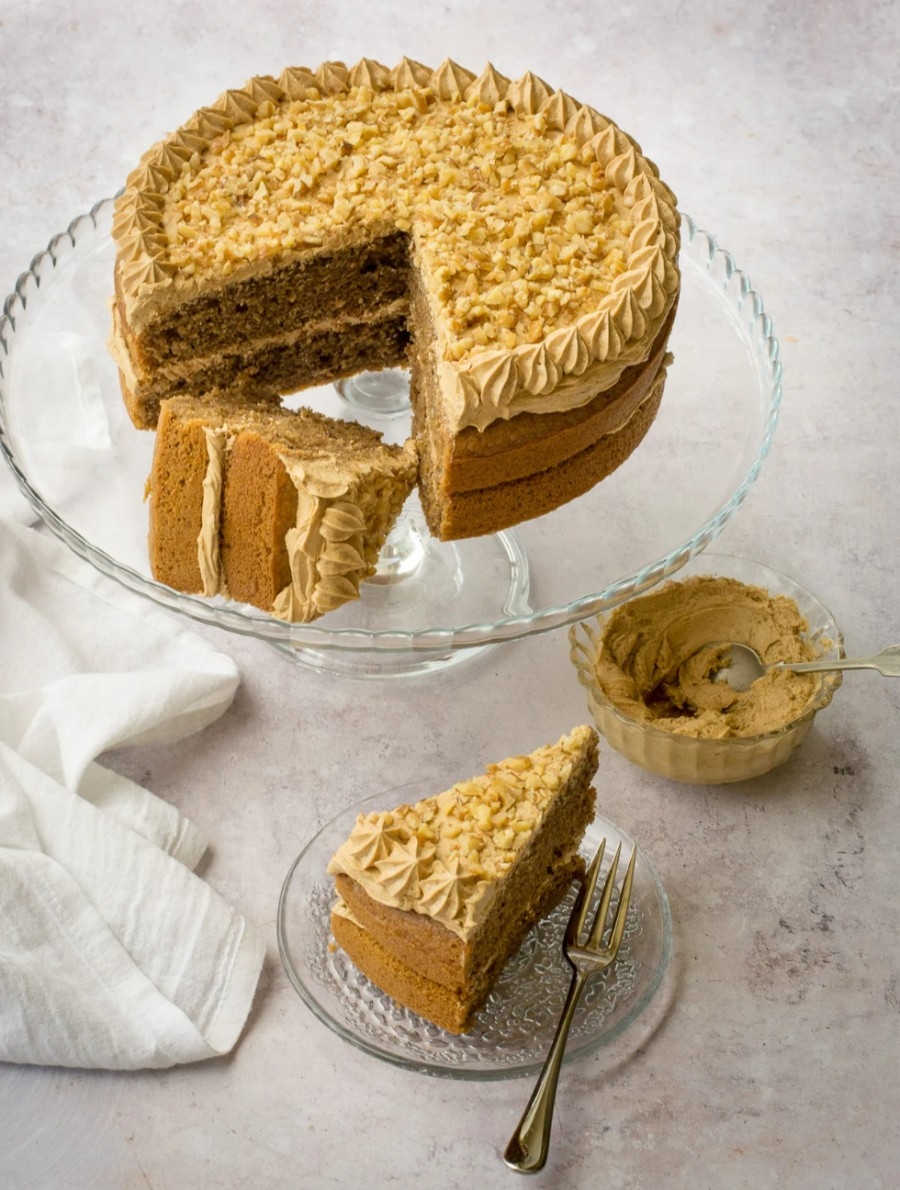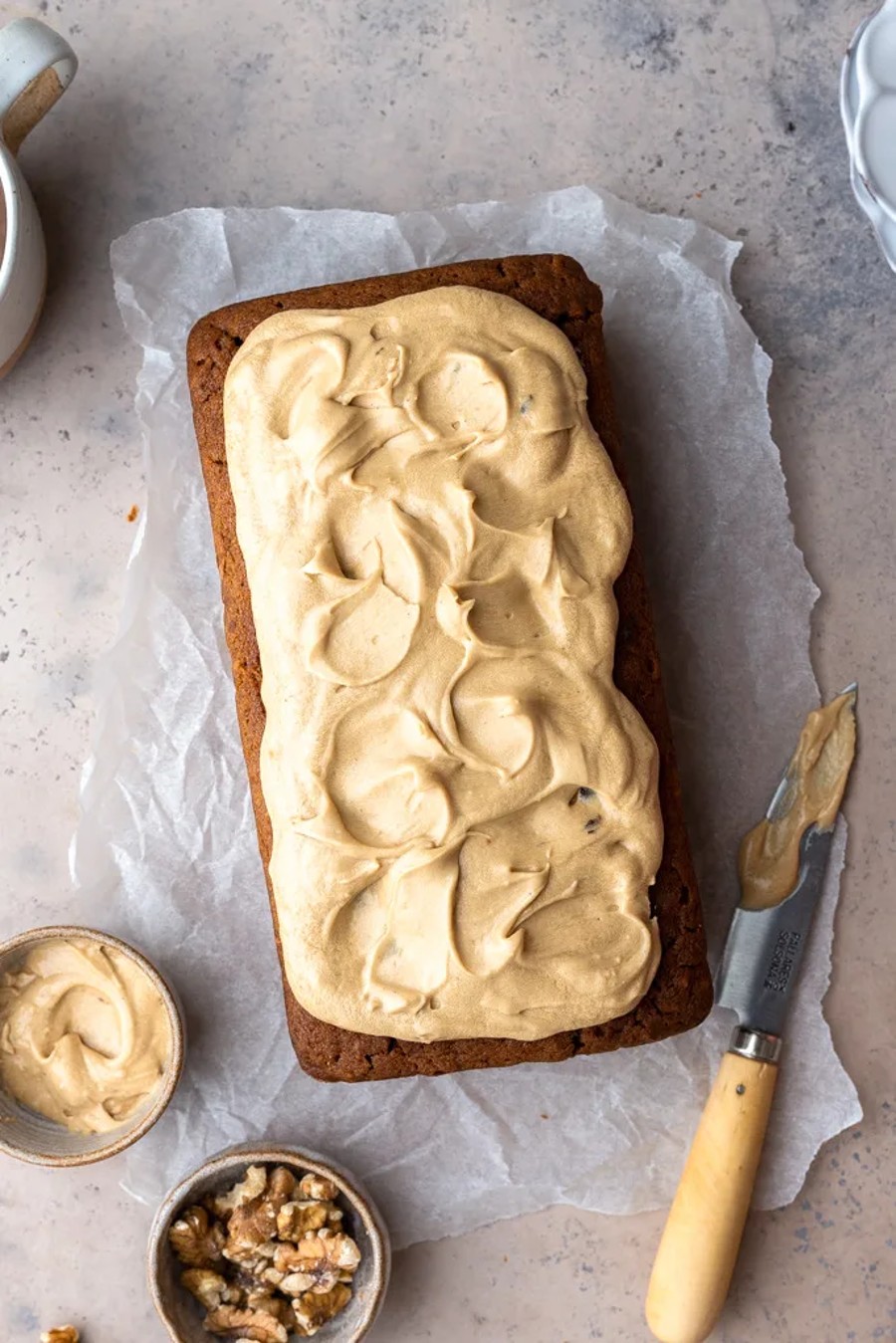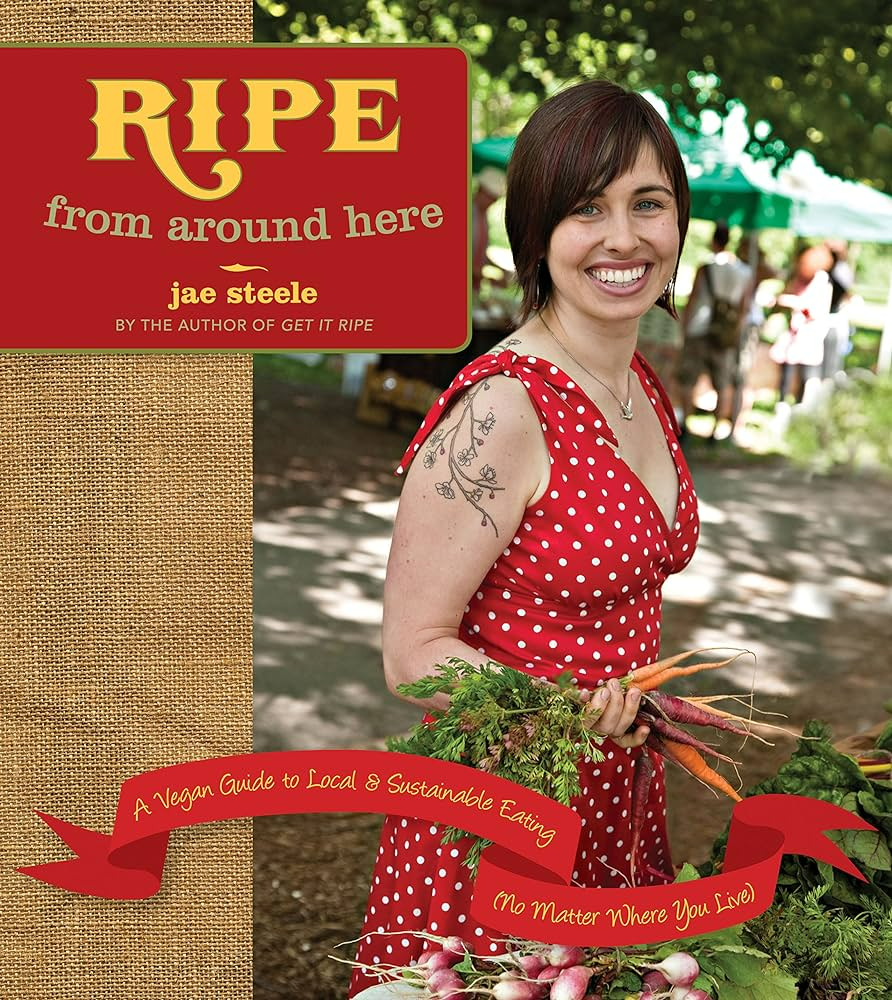Homemade (vegan) Coffee Walnut Cake Recipes

There’s something so English about a slice of coffee walnut cake, isn’t there? It kind of reminds you of your mum and dad (or aunties or uncles), bringing back fond childhood memories of Camp coffee essence.
Coffee & walnut cake is one of England’s favourite tea time treats, even though a third of people don’t drink coffee. Food writer Nigel Slater once wrote that a slice of coffee walnut cake would be his favourite meal!
If you like a morning cup of java, try Sanctuary Coffee (donates profits to animal sanctuaries).
Coffee walnut cake (School Night Vegan) has candied walnuts, a syrup-soaked sponge, vegan buttercream and candied pecans).
Choose palm-oil-free vegan butter. Keep coffee and walnuts away from young children and pets. Read more on food safety for people and pets.

This recipe for vegan coffee walnut cake (The Veg Space) is so simple to make, with everyday ingredients. It’s sure to become a weekly staple, for when company’s arriving. It combines a light nutty sponge, with a fluffy coffee buttercream.

This vegan coffee walnut cake (A Cupful of Kale) is super simple to make. Just bake the loaf, and top the cooled dessert with vegan coffee buttercream.
Origins of Coffee and Walnut in Baking
Coffee itself became widely popular in Europe during the 17th and 18th centuries, and its rich aroma quickly found its way into desserts. Walnuts, with their long history in European kitchens, were a natural partner. These nuts added texture and a subtle bitterness that echoed coffee’s flavour, enhancing the sensory experience.
Classic coffee and walnut cakes became a staple in afternoon teas and family gatherings. Their popularity grew not just because of taste, but because they offered a pleasant contrast of soft crumbs and crunchy nuts.
Flavour Harmony: Bitter Meets Earthy
The magic of coffee and walnut lies in how their flavours complement each other. Coffee provides a deep, bitter edge that cuts through sweetness without dominating. This bitterness acts like a gentle wake-up call for the palate.
Walnuts, on the other hand, bring an earthy richness with a slightly oily texture that adds depth to every bite. The slight bitterness of toasted walnuts echoes the coffee, tying the flavours neatly together.
Common Challenges and How to Avoid Them
Vegan baking isn’t always straightforward, so watch out for these typical issues:
- Dry cake: Usually caused by too much flour or overbaking. Check your oven temperature; ovens often run hot. Use a skewer to test doneness early.
- Dense cake: This can occur if the batter is overmixed or if your egg replacer doesn’t provide enough lift. Mix just until combined, and choose a binding agent that supports rise, such as flaxseed with baking powder.
- Lack of flavour: Strong coffee and freshly toasted walnuts are essential. Avoid stale nuts or weak coffee – they will dull the flavours.
- Frosting too runny or stiff: Adjust the amount of coffee or margarine. Chill the frosting briefly if it’s too soft before piping or spreading.
Storing Vegan Coffee and Walnut Bakes
Keeping your cakes fresh and tasty involves proper storage:
- Wrap cakes tightly in airtight containers. Vegan cakes often retain moisture better but can dry out if exposed to air.
- Store at room temperature where possible for up to two days. Refrigeration is fine for longer, but it may firm up the cake; bring it to room temperature before serving for best texture.
- Keep frosted cakes refrigerated but serve slightly chilled rather than cold, so the flavours and textures are more pronounced.






